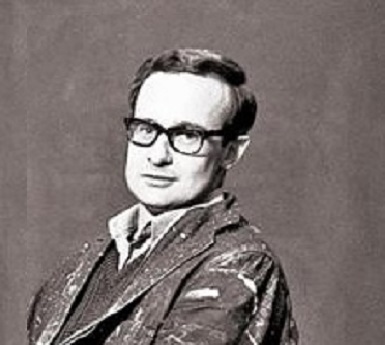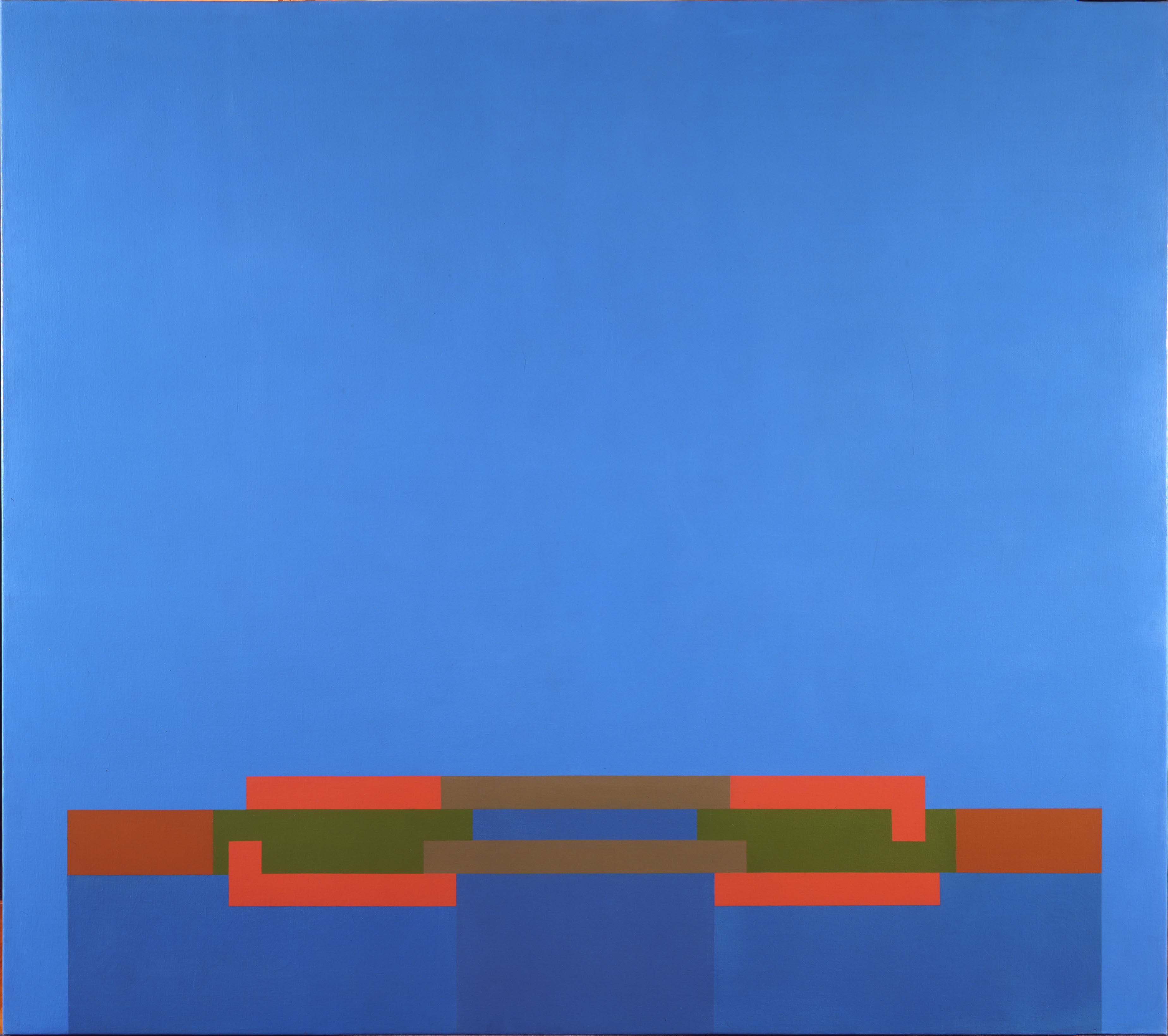 Nationality
Nationality
British
Education
- 1951-54: St Martin's School of Art
- 1954-57: Royal College of Art
Taught
- Slade School of Art, University of London, Bath Academy, Corsham and Visiting Professor at Minneapolis Institute of Fine Art
Background
The Dennys were descended from Sir Anthony Denny, a confidant of Henry VIII in the king’s later years, when he rejoiced in the title of First Chief Gentleman and Groom of the Stool. Sir Anthony did well out of the Dissolution
of the Monasteries, taking over Waltham Abbey. The family continued to prosper under Queen Elizabeth I, who granted them lands in Ireland — where they lived until the early 20th century.
Admiring of Oscar Wilde and George Bernard Shaw, Robyn Denny was rebellious from an early age and perceived that becoming a painter would allow him to practise his waywardness professionally. An early outrage was his
overpainting in bright primary colours of the plaster reredos in his father's church at Burwash, East Sussex. The act precipitated an emergency meeting of traumatised village elders. There was irony: decades
later he was commissioned to create his serene reredos for the church of Our Lady of Lourdes in Acton, west London.
After national service in the Royal Navy he studied at St Martin’s School of Art (1951-54) and the Royal College of Art (1954-57). After graduating from the RCA in 1957 he was awarded a scholarship to study in Italy,
thereafter teaching part-time at Hammersmith School of Art, the Slade School of Art and the Bath Academy of Art, Corsham.
The artist
Robyn Denny was one of a powerful generation of innovatory artists and was to become one of the most original abstract painters of the later 20th century, evolving an intellectually demanding approach to painting that – perhaps
paradoxically – resulted in pure visual delight bordering on the voluptuous.
A successful retrospective at the Tate Gallery in 1973 made him the youngest artist ever to be given a retrospective by the Tate and was the apex of Denny’s early career. In 1966 he was selected, alongside Anthony Caro,
Richard Smith and Bernard & Harold Cohen, to represent Britain at the 1966 Venice Biennale.
By 1964, Denny was with the ultra-modern Kasmin Gallery and enjoying considerable commercial success at home and abroad. In 1974 he held eight solo exhibitions in Europe alone. By the end of the 1970s almost every
important art institution had acquired his work, including the Tate, which has more than 80 pieces, and the Museum of Modern Art, New York.
View from the Blue III
This plangent abstract is a canonical example of an uncompromising rejection of the English landscape painting tradition. Discussing his astonishingly beautiful paintings, Denny was outraged by the suggestion that the
horizontal across many of his canvases might be described as a ‘horizon line’: these were, he declared, ‘datum lines’ to fix the eye. Nature – and still less its representation – was banished from his work.
Denny’s early painting typically consisted of large, symmetrical canvases on which bands of soft, muted colour framed shapes like overlapping doorways. From the late 1960s he introduced freer, more vibrantly-coloured
compositional motifs in which verticals were no longer so dominant. His paintings required a constant process of visual adjustment, with juxtaposed colours producing flicker effects that made the forms, spaces and scales
appear unstable. Some critics felt that the subtleties of his colour palette owed more to French traditions, following in the wake of Redon, Seurat and Monet.
In the early years of this century it became apparent that View from the Blue III was in need of conservation. This is one of the finest examples of his oeuvre, and the CNAA trust was grateful to have the artist’s
advice as the canvas was relined.


 Nationality
Nationality